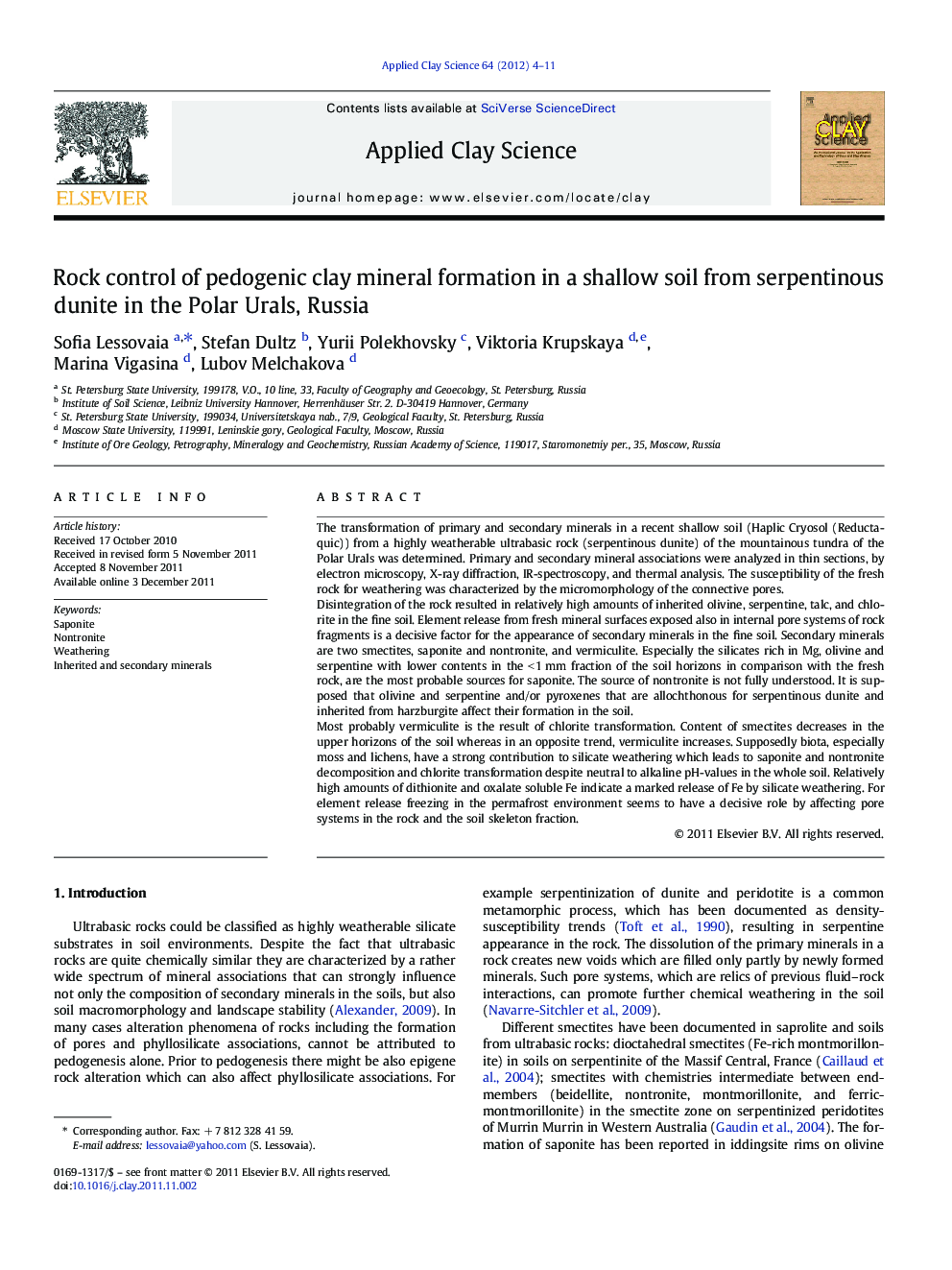| کد مقاله | کد نشریه | سال انتشار | مقاله انگلیسی | نسخه تمام متن |
|---|---|---|---|---|
| 1695249 | 1519104 | 2012 | 8 صفحه PDF | دانلود رایگان |

The transformation of primary and secondary minerals in a recent shallow soil (Haplic Cryosol (Reductaquic)) from a highly weatherable ultrabasic rock (serpentinous dunite) of the mountainous tundra of the Polar Urals was determined. Primary and secondary mineral associations were analyzed in thin sections, by electron microscopy, X-ray diffraction, IR-spectroscopy, and thermal analysis. The susceptibility of the fresh rock for weathering was characterized by the micromorphology of the connective pores.Disintegration of the rock resulted in relatively high amounts of inherited olivine, serpentine, talc, and chlorite in the fine soil. Element release from fresh mineral surfaces exposed also in internal pore systems of rock fragments is a decisive factor for the appearance of secondary minerals in the fine soil. Secondary minerals are two smectites, saponite and nontronite, and vermiculite. Especially the silicates rich in Mg, olivine and serpentine with lower contents in the < 1 mm fraction of the soil horizons in comparison with the fresh rock, are the most probable sources for saponite. The source of nontronite is not fully understood. It is supposed that olivine and serpentine and/or pyroxenes that are allochthonous for serpentinous dunite and inherited from harzburgite affect their formation in the soil.Most probably vermiculite is the result of chlorite transformation. Content of smectites decreases in the upper horizons of the soil whereas in an opposite trend, vermiculite increases. Supposedly biota, especially moss and lichens, have a strong contribution to silicate weathering which leads to saponite and nontronite decomposition and chlorite transformation despite neutral to alkaline pH-values in the whole soil. Relatively high amounts of dithionite and oxalate soluble Fe indicate a marked release of Fe by silicate weathering. For element release freezing in the permafrost environment seems to have a decisive role by affecting pore systems in the rock and the soil skeleton fraction.
► Inherited phyllosilicates in soil are represented by chlorite, talc, and serpentine.
► Secondary smectites (saponite and nontronite) and vermiculite are identified.
► Content of smectites decreases in the upper horizon despite neutral to alkaline pH-values.
► Content of vermiculite increases in the upper part of soil.
Journal: Applied Clay Science - Volume 64, August 2012, Pages 4–11